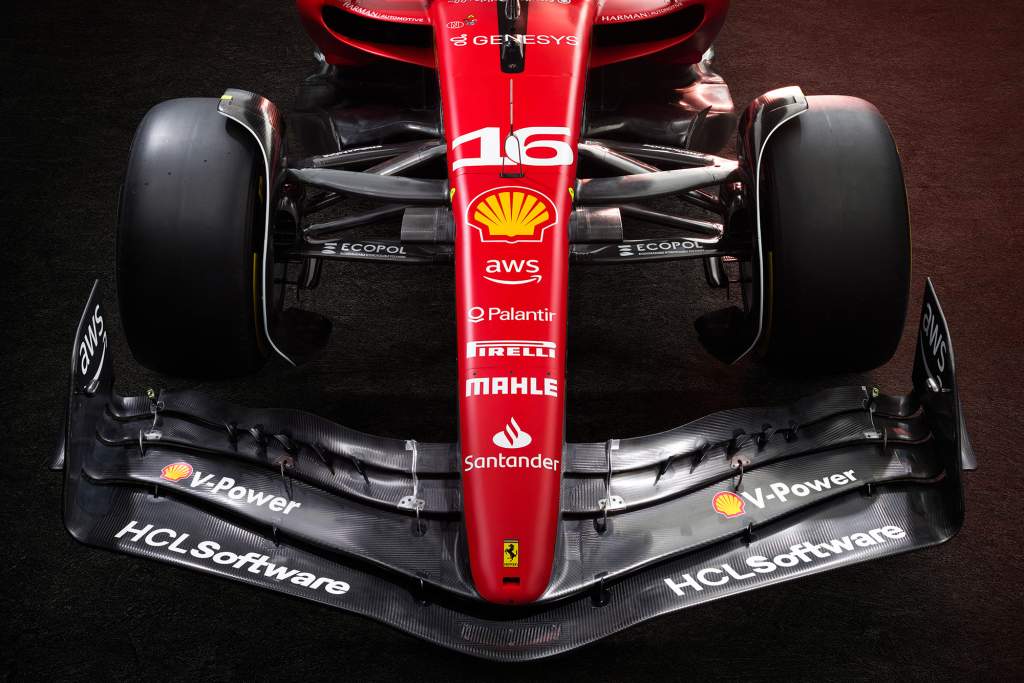Up Next

When you see the facilities that Ferrari has at Fiorano, including the test track, it is almost impossible to understand why it could ever be beaten.
Ferrari’s new SF23 follows the same overall aerodynamic template as its 2022 Formula 1 car.
The radiator intake and the undercut on the front corner of the sidepod are optimised further but are still very similar.
Ferrari has also kept the top surface ‘bathtub’ on the sidepod. It does have fewer louvres on this surface but I’m pretty sure they will be variable depending on the individual cooling requirements for each circuit.
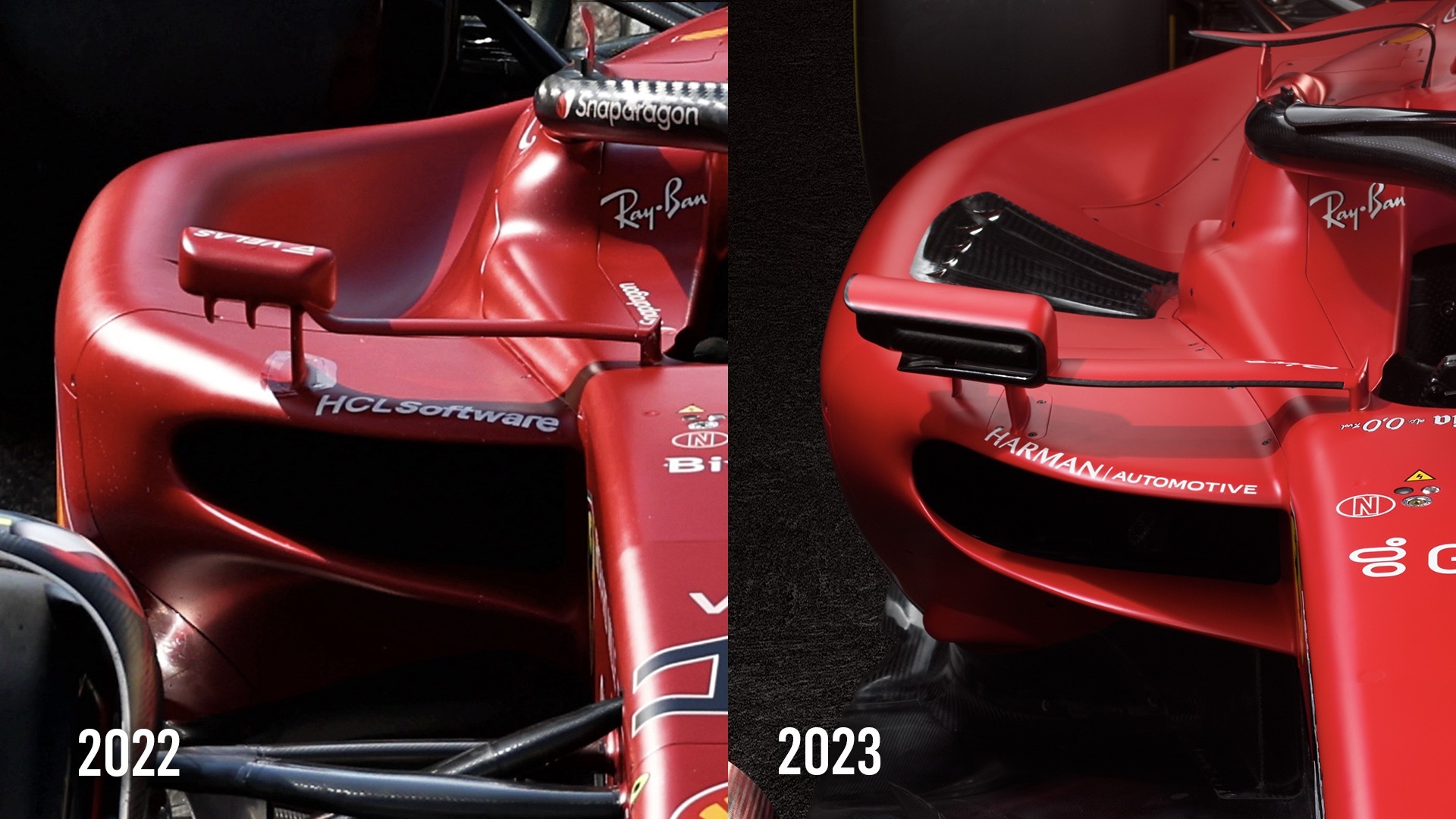
These comparison shots show that the bathtub sidepod top surface is not quite as dramatic as it was last year. These exit louvres just behind the top section of the radiator will improve the efficiency of the radiator cooling in this area.
The inlet sweeps further around the corner of the sidepod, the opening is longer and shallower meaning that the open area will be very similar. However, the under surface to the inlet is probably higher, allowing more room for the undercut.
The sidepod front corner undercut is bit more aesthetically pleasing than last year’s. It’s not quite as vertical an outer body surface, which will be more sympathetic to airflow direction changes. It’s important to create a surface that is as robust as possible with differing airflow when the front wheels are steered. The front wheel angle in fast corners compared to slow-speed corners creates a massive difference in the airflow in this area.
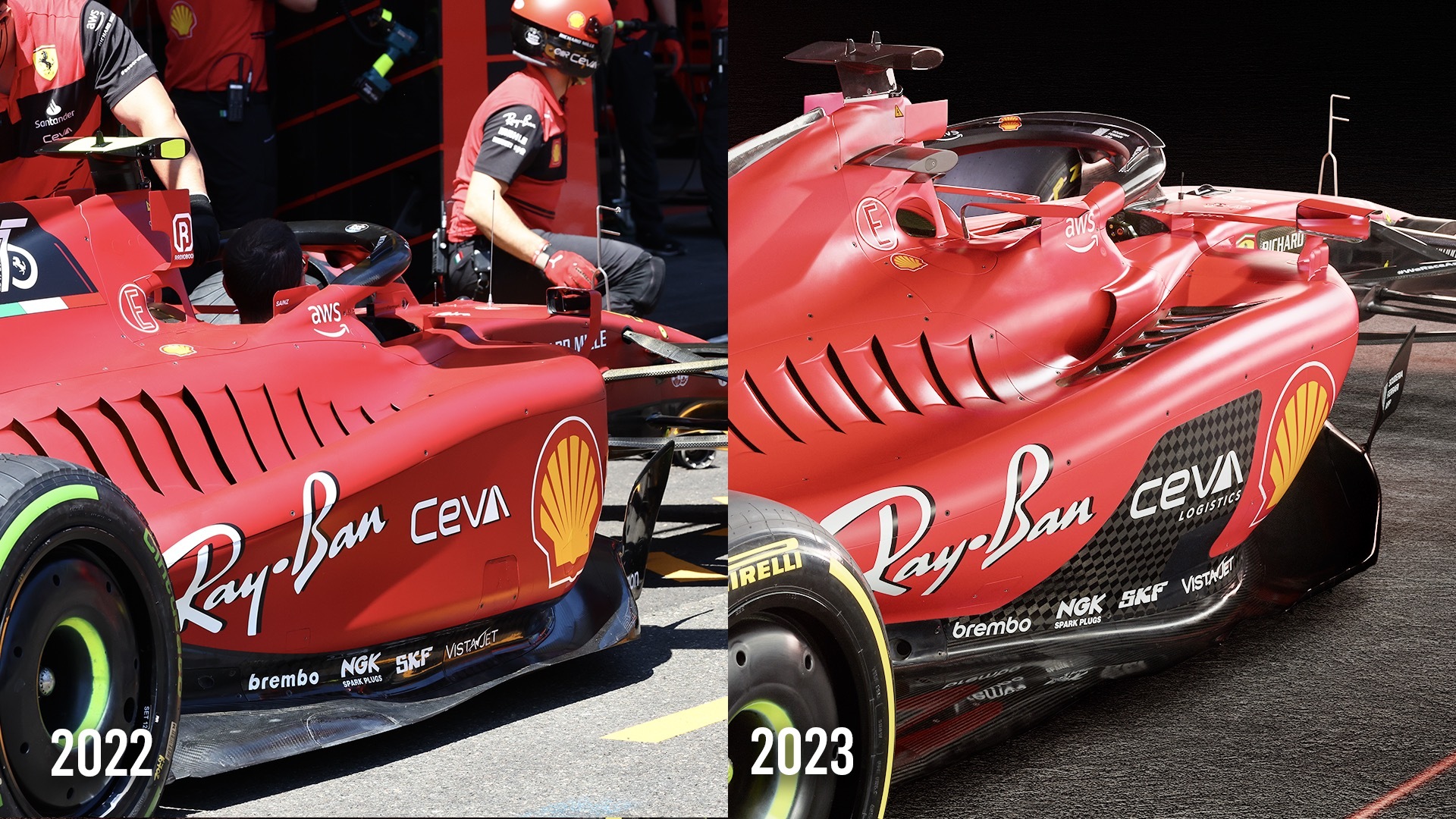
It’s interesting to see quite a bit of unpainted carbon on the surfaces simply to save some weight, which just shows the weight limit is still very difficult to achieve even for top teams.
The front wing is different to last year. It has the now-common full-width slot gap (green highlight on image below) between the front element and the second element.
Also the trailing edge of the rear flap of the front wing (red highlight below) is fairly consistent going outboard then drops away fairly quickly from the inside of the front tyre.

This will offer reasonably consistent airflow between the inside of the front wheels and the chassis with differing front wing angles in that area, and then with this quick drop-off it will generate as much outwash as possible as the flow coming off the top surface of the front wing connects up to the tyre squirt – which is when the airflow is squeezed out as the front wheel rotates onto the track surface.
Together with these vanes (magenta ellipse on image above) turning airflow outboard, Ferrari has been focusing on maximising outwash. This is something these regulations have strived to minimise so I would expect the FIA to be taking a close look at these vanes.
There is a question over the legality of the vanes that I’ve highlighted in the magenta ellipse in how they join the third and fourth wing flaps.
Mercedes arrived at the United States Grand Prix last year with the solution below but had to remove the brackets at the behest of the FIA.
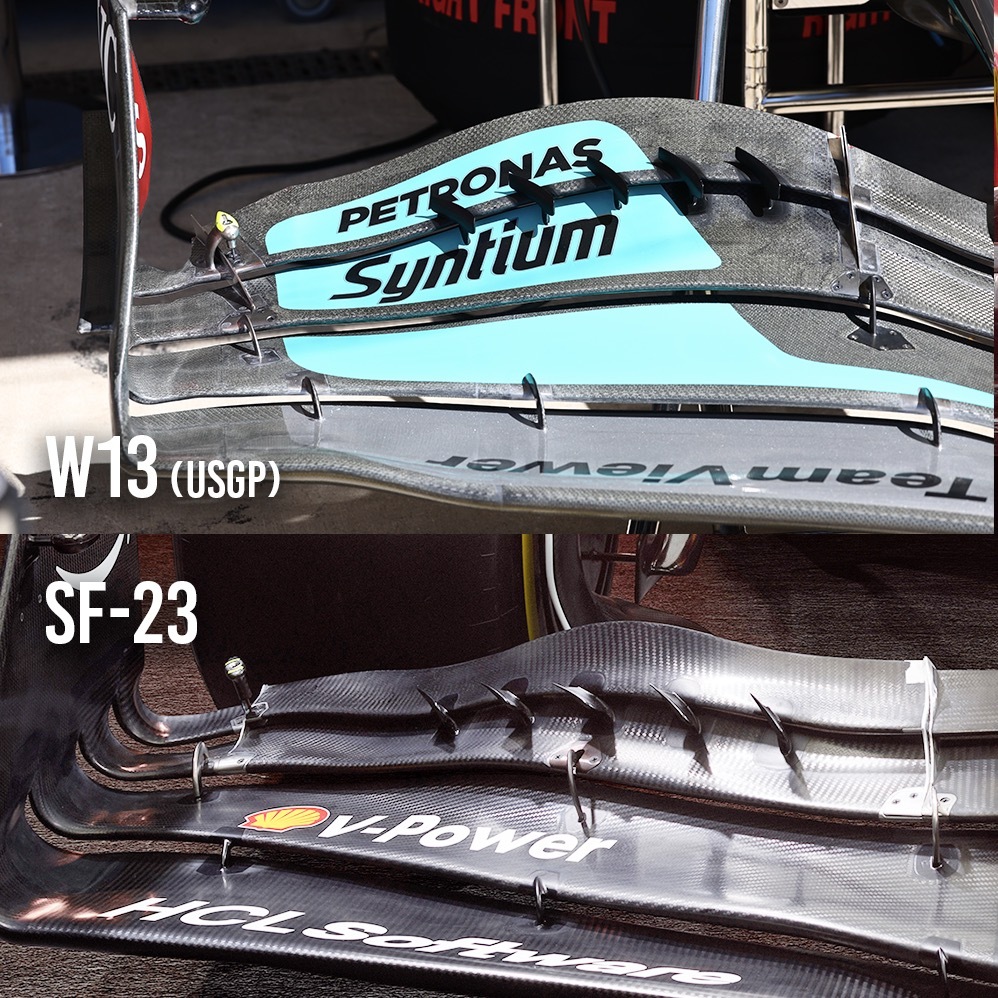
The geometry of the vanes must have been within what was allowed by the regulations otherwise Mercedes would not have tried it, so the officials’ judgement would have been based on the vanes’ intent and purpose.
The regulation for the use of anything like this was rewritten for this year to limit the quantity, the overall size and the curvature of these components.
I can only assume that what Ferrari has put on the car complies with the letter of these new regulations.
You can see that the three outer ones are a little different relative to the inner two, so it looks like Ferrari is trying get over this regulation by saying they are being used for different purposes. Good luck with that.
As well as complying with the regulations, there’s always the question of what’s called ‘primary purpose’. So if there’s something on the car that is legal and ostensibly for one reason – in this case maintaining the slot gap – but the FIA believes it’s for another – for example aerodynamic gain – then you can hit trouble.
Getting as much of the tyre squirt as possible to go outboard is critical to the amount of turbulence the front tyre generates. If it comes inboard it will generate a negative effect on the airflow at the leading edge of the sidepods and underfloor.

The front suspension is a pushrod-driven inner damper (yellow highlight) with a spring or torsion bar supporting the car. The wishbone pick-ups where they join the chassis (green highlight) have a small amount of anti-squat/anti-lift on them to help support the front of the car and reduce the ride height change when the loads are changing under braking.
The steering track rod (magenta highlight) is low down in front of, but slightly higher than, the forward leg of the lower front wishbone.
It’s interesting to see how much curvature there is on the upper surface of the forward leg of the top wishbone. There is a regulation of a 3.5:1 ratio to control this and normally this component would be a simple symmetrical aerodynamic profile.
But it looks like Ferrari has generated more of a one-sided aerodynamic profile, a bit like an upside down wing. This is optimised to control the airflow coming off the trailing edge of the front wing and realign it as well as possible to improve the performance of the leading edge of the sidepod.
The rear suspension is pushrod operated, very similar in layout to last year. But the forward leg of the top wishbone inboard mounting looks like it is mounted a little lower, giving more anti-lift to reduce the rear ride-height change under braking.
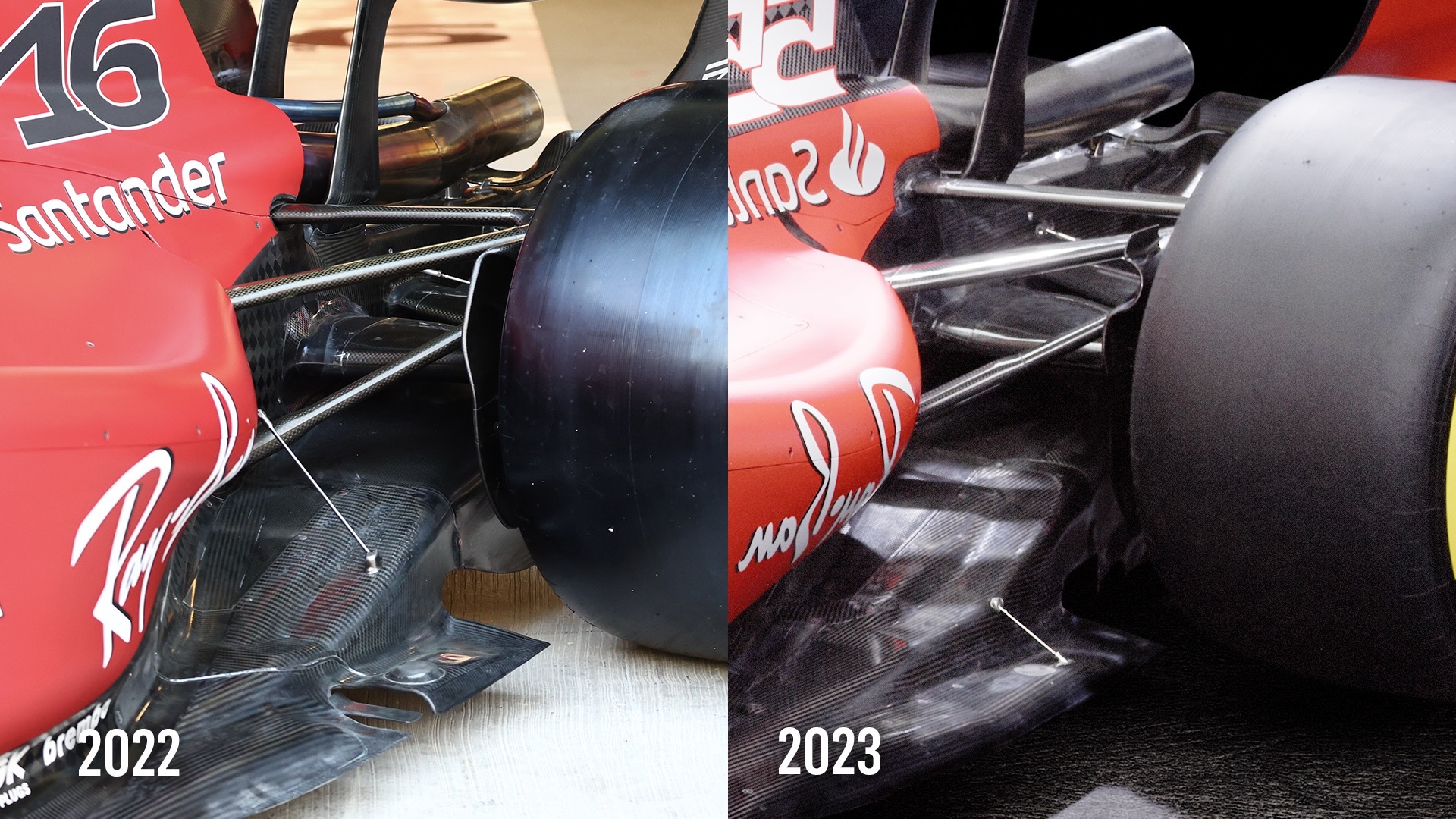
The actual body profile in the coke bottle area – where the body narrows towards the rear tyres – is a little more bulbous, taking up some of the coke bottle opening. This is one area that varies dramatically on the Ferrari from the other cars we have already seen, and I’m not sure I am a fan of this solution.


